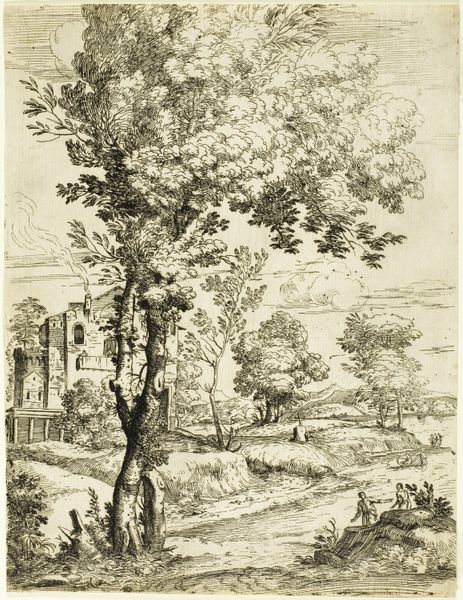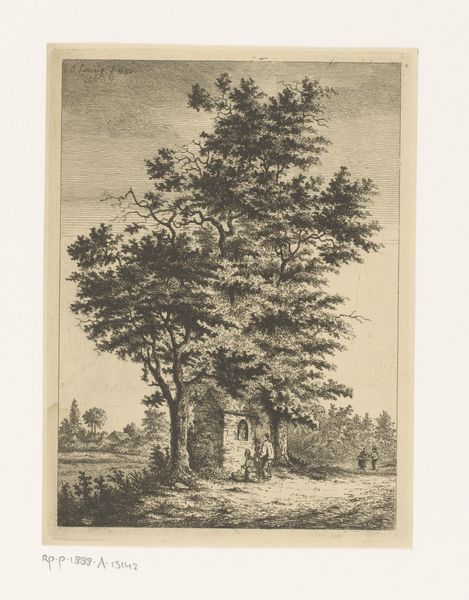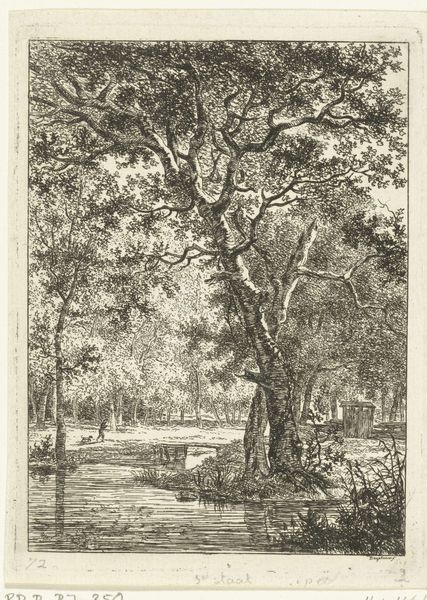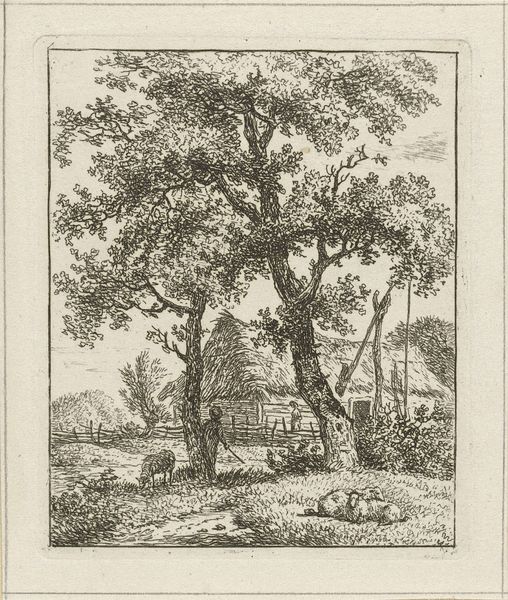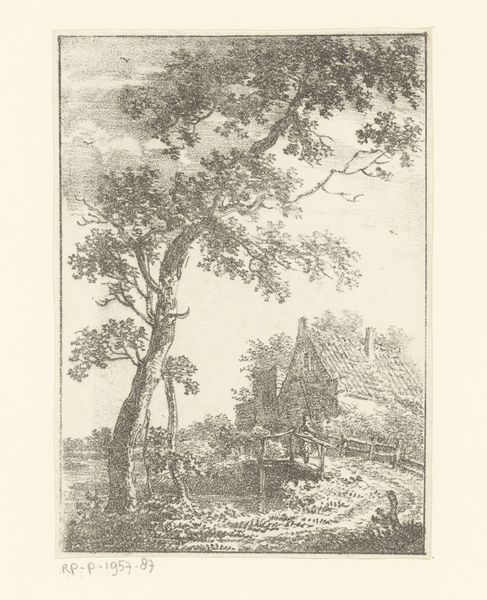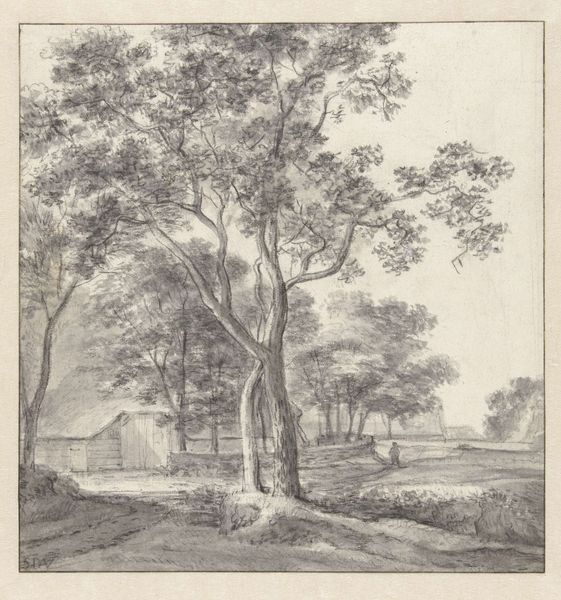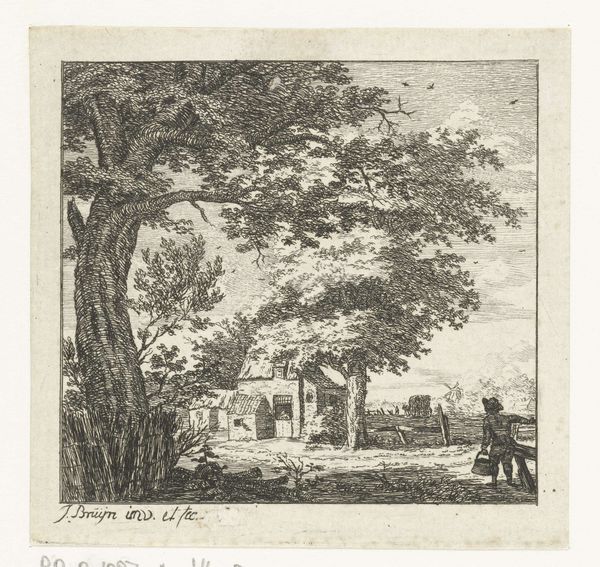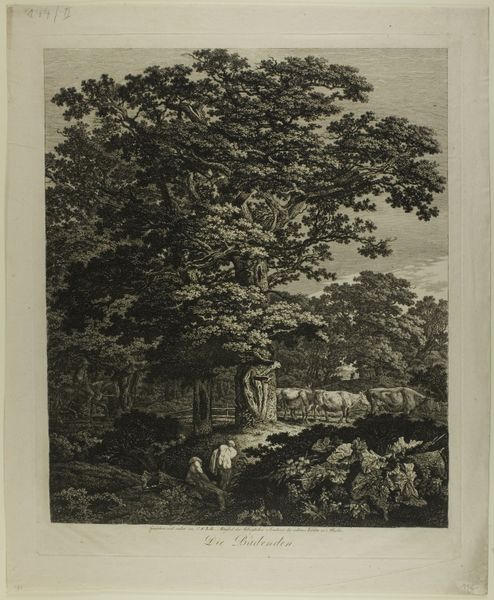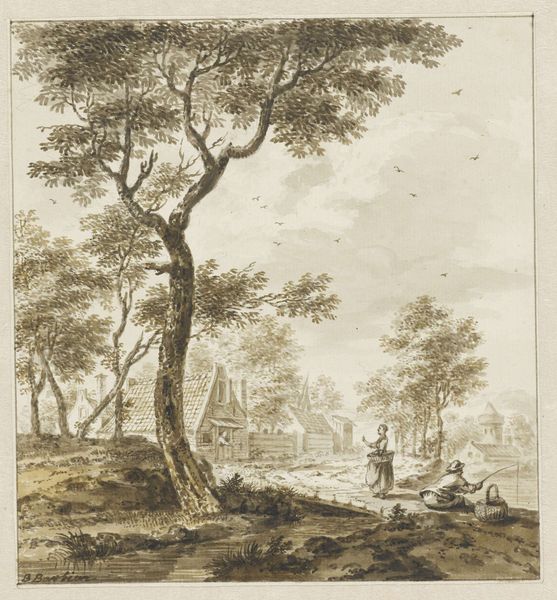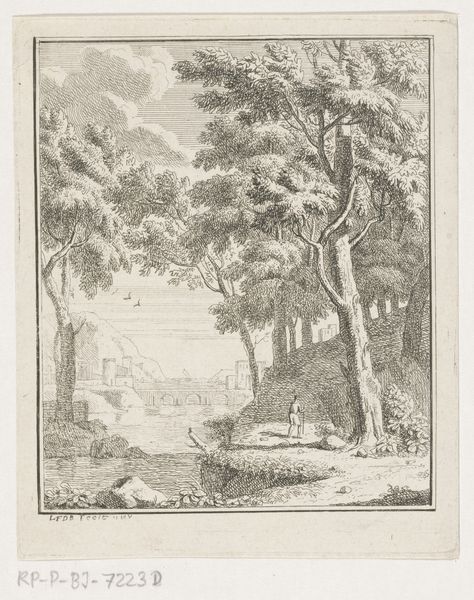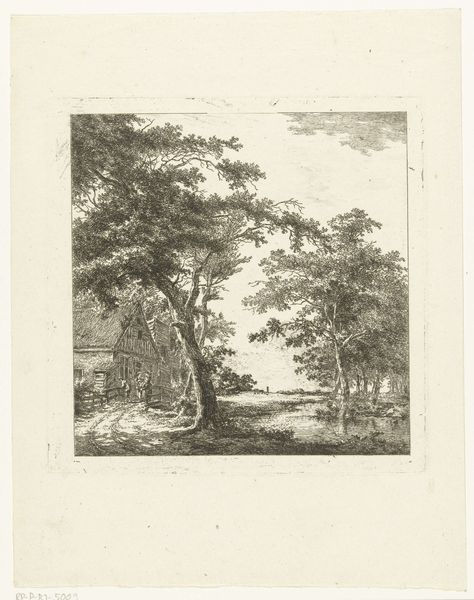
print, etching
# print
#
etching
#
landscape
#
romanticism
Dimensions: height 134 mm, width 94 mm
Copyright: Rijks Museum: Open Domain
Curator: This etching, "Landscape with a Tree in Front of a Farmhouse and Man with Dog," was created by Jan van Delden in 1811. What strikes you about it? Editor: The texture! All those tiny lines create such a sense of density, almost like looking through a hazy summer afternoon. It's also amazing how much detail he gets in such a small scale print. Curator: The Romanticism movement prized nature, and we see that in Van Delden's intimate focus on this particular landscape, wouldn't you say? Editor: Absolutely. But for me it’s about how he created this world physically. Look closely: you can almost trace his process, etching away at the metal plate, considering the amount of ink needed, wiping, and pressing it. He's not just representing nature; he's shaping it through a deliberate process. I am particularly fascinated with that farmhouse...thatched roofs are so material! The artist definitely wants us to meditate on the humble dwellings of men... Curator: I see what you mean; I too wonder how much the artist interacted with the subject during his visits to rural farmhouses and areas. You’re right to say thatched roofs themselves involve an immense amount of human labor and communal enterprise too. Do you think it shows labor as something desirable? Editor: Labor is present; desirable or not, the labor creates these materials, these textures and surfaces to touch and walk on; but how much the human toll of it factors in Jan Van Delden's choices, I am not so sure. What about the tree in the foreground dominating over the house for you? Curator: Well, that brings me back to the Romantic sensibility – the sublime power of nature! This grand tree stands like a guardian over the scene, while that lone figure walking with his dog creates a poignant scene with great depth. Editor: So in short, Jan van Delden encourages the imagination. From that tree to the peasant figure and of course, through this careful layering of textures and techniques, we can find art where we might least expect to look: close to earth, to the hands that have shaped our dwellings and landscapes. Curator: Nicely said. An exploration in the landscape itself and through the art and material, it takes us closer to appreciating the beauty of that simple scene from so long ago.
Comments
No comments
Be the first to comment and join the conversation on the ultimate creative platform.
